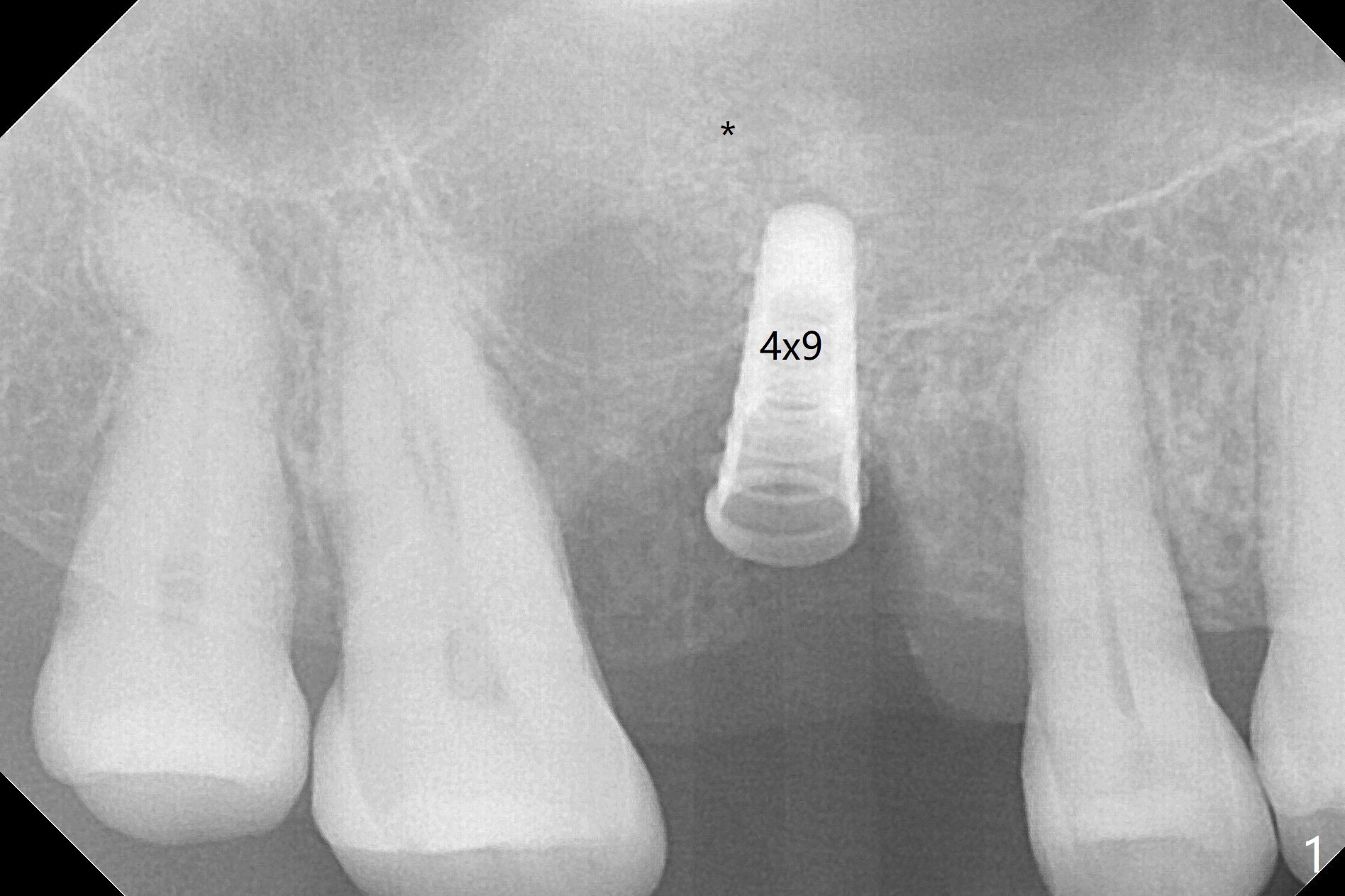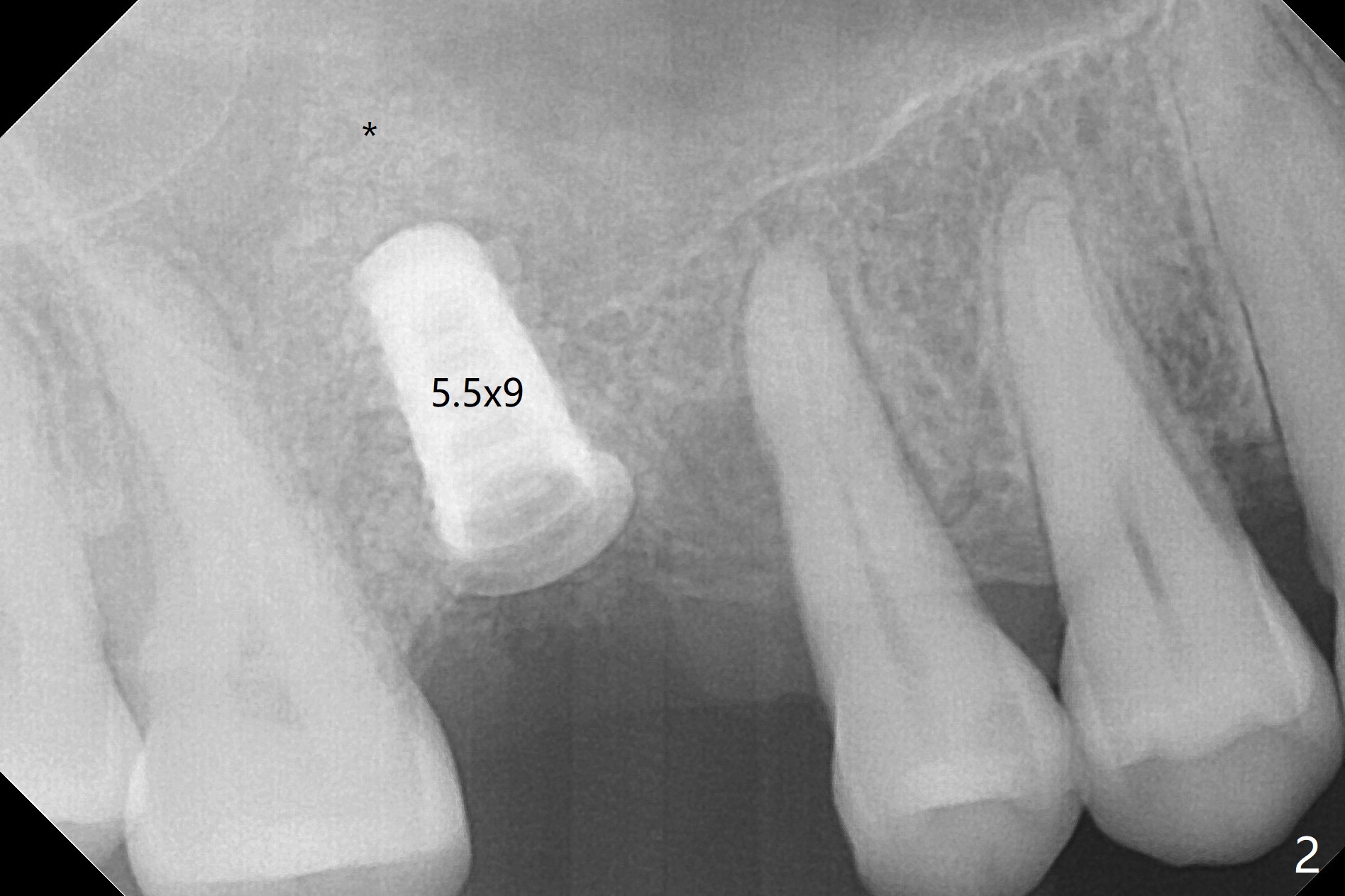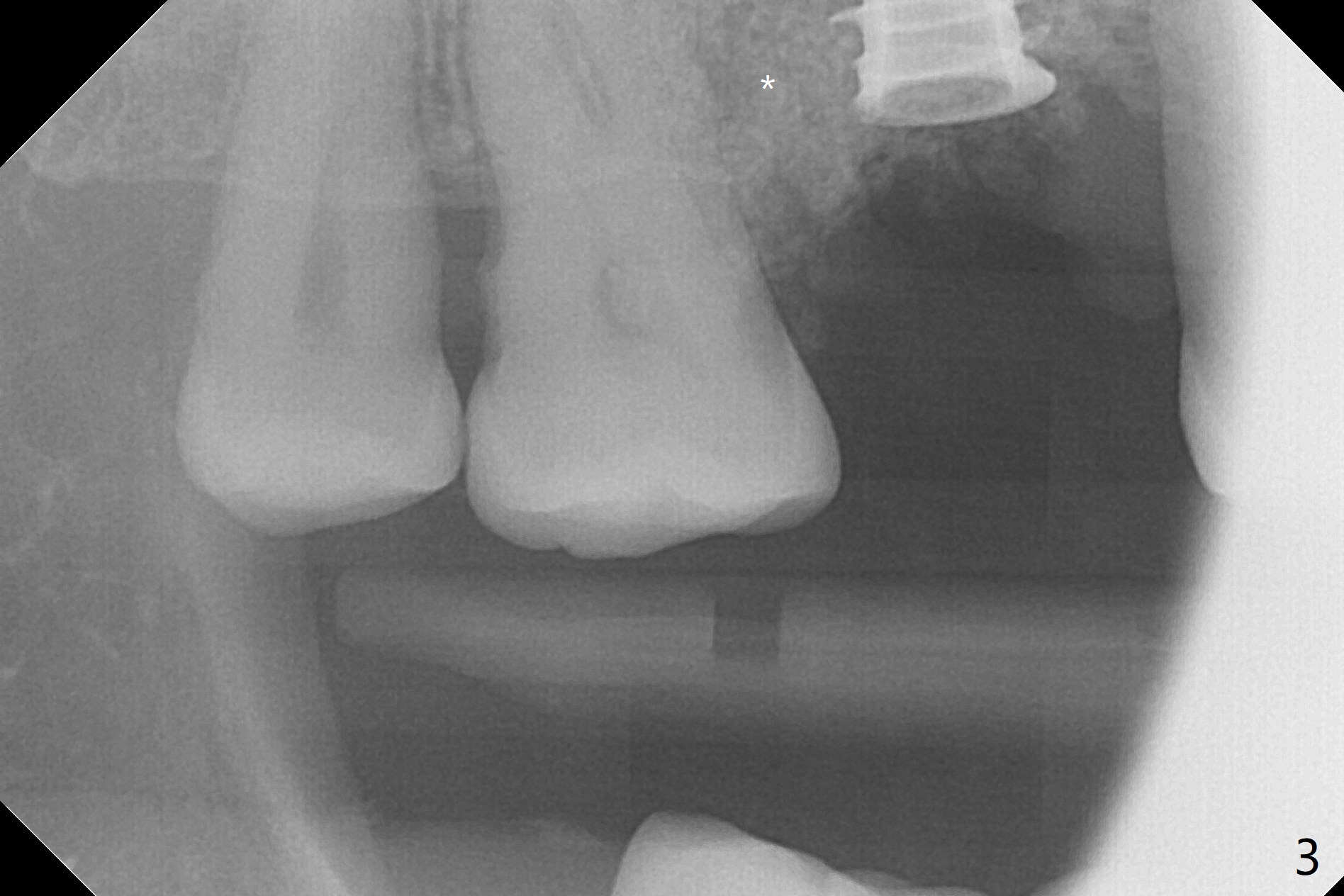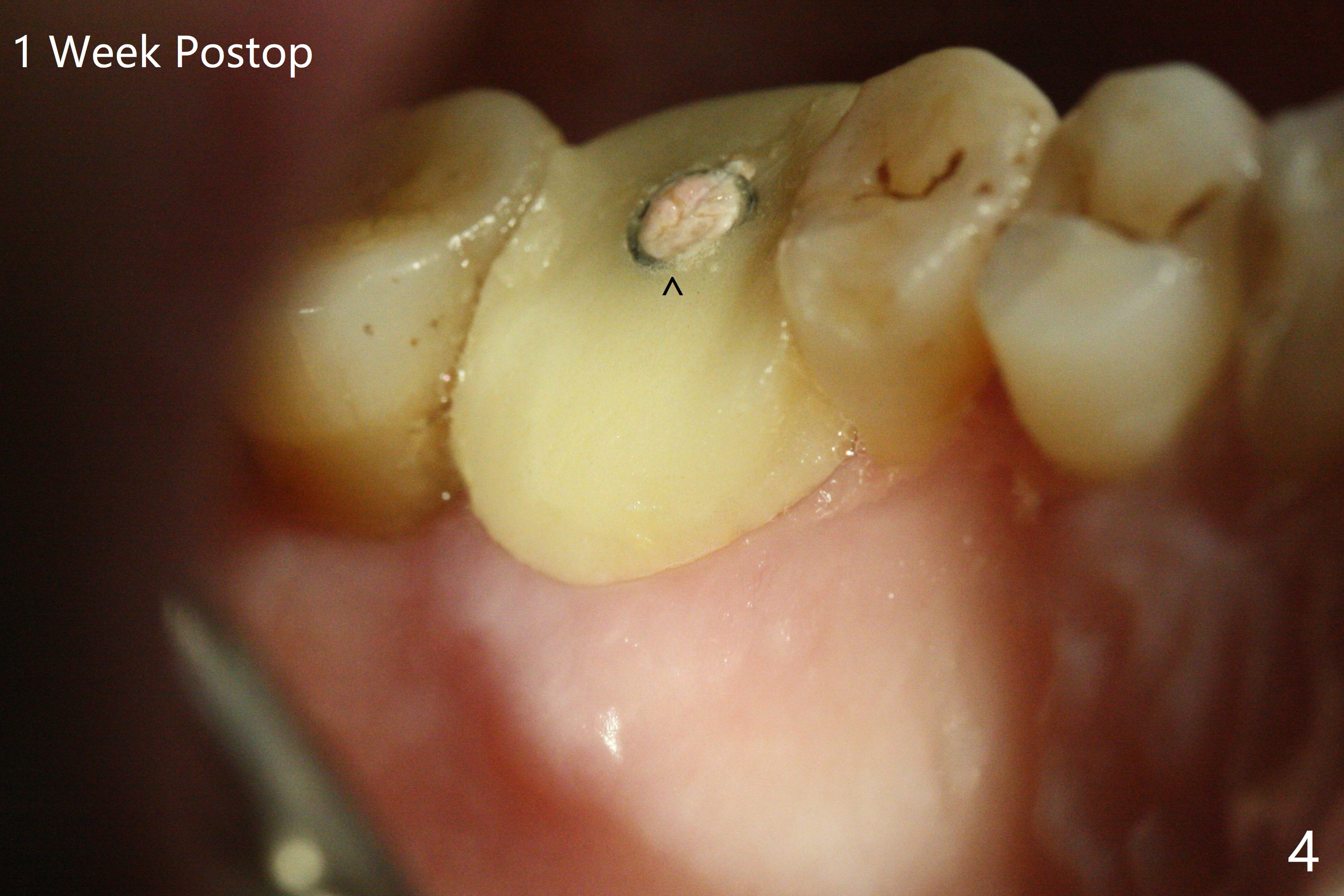



,%207%20m%20postop.jpg)
 |
 |
 |
 |
,%207%20m%20postop.jpg) |
Thickened Sinus Membrane Helps Lift I
After extraction and debridement, osteotomy is initiated in the mesiobuccal socket free hand. Since the remaining bone is ~ 2 mm, the sinus floor is perforated suddenly. Fortunately the sinus membrane is not, as related to its thickening (similar to water ballooning, without symptom). Use 2-3.5 mm drills to enlarge the bony perforation (mainly lateral movement), followed by pushing bone graft upstairs with a curette (Fig.1 *); insert a 4x9 mm dummy implant (Fig.1) to determine the length of the final implant (Fig.2,3). A drawback of this case is the low torque (<20 Ncm), considering the thin bone. Following deeper implant placement, a 5.2x6(2) mm temporary abutment is placed for an immediate provisional to keep large amount of bone graft in place (Fig.3 *). There is no pain 1 week postop, while the immediate provisional remains stable partially because of the temporary abutment (Fig.4 ^). The bone graft (Fig.3 *) appears to have attached to the root of the neighboring tooth and the implant threads 7 months post op (COVID 19, Fig.5 arrowheads)).
Return to
Upper
Molar Immediate Implant,
Prevent Molar Periimplantitis (Protocols,
Table)
Trajectory II
23
Xin Wei, DDS, PhD, MS 1st edition
11/11/2019, last revision
06/18/2020